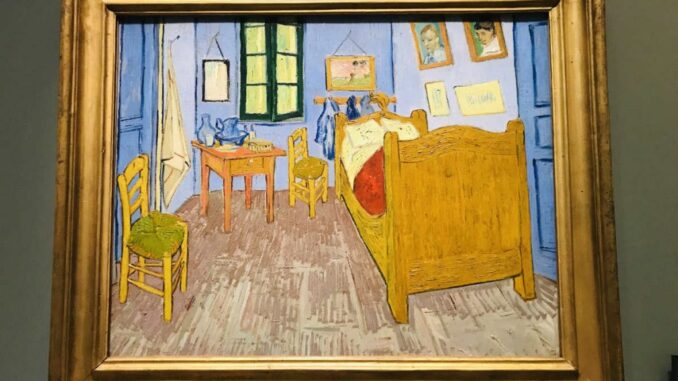
France is well known as an artistic powerhouse. From artists, writers, poets and music to architecture – France has had a lasting effect on Europe’s visual culture for centuries.
Late eighteenth century French art began to shift significantly. Painting-wise, Jacques-Louis David and Nicolas Poussin became leaders of a Neoclassical movement, mimicking the contours of Greek vases for which their work became signature pieces.
Romanticism
Romanticism first surfaced in France at the turn of the 18th century as an antidote to neoclassicism’s strict rules and formality, emphasizing emotionality over rationality and orderliness.
Artists often used nature as an outlet to express their emotions and depict sublime emotions – strong feelings that overpower one’s rational sense of objectivity – by depicting scenes of nature.
Rococo
Rococo was a highly decorative style which originated in France and spread through Europe, becoming recognized as a distinct period in European art history.
Rococo period artists such as Jean-Antoine Watteau were highly influential in painting and decorative arts, often using theatrical techniques with figures in costume in front of scenic backgrounds lit with artificial illumination.
Rococo was known for its ornamentation, both sculptural, architectural, and painted. Fashionably speaking, however, Rococo also introduced several distinct fashion features including wide panniers under dresses that became staples of formal wear – inspired by seventeenth-century Spanish fashion which initially existed to conceal pregnant bellies.
Baroque
Baroque art emerged in Europe during the 17th century and was characterized by dynamic movement, bold realism and direct emotion. This artistic movement left its mark on French arts such as architecture, irish flutes, dance, painting sculpture poetry.
Baroque architecture is known for its lively and dramatic designs, often employing curved walls, vaulted ceilings, painted ceilings, columns, arches, statues, fountains and broken pediments to grab viewers’ attention.
Baroque art can be found everywhere from portraits, still lives, and mythical subjects to portraits featuring intense emotions captured in its paintings by Jean Latour and Philippe de Champaigne – artists known for capturing profound emotions with their art.
Neoclassicism
Neoclassicism was an art movement which emerged during the French Revolution and flourished through to 1848. Artists and architects in this era found inspiration from classical antiquity when creating works reflecting their ideals of that time.
Neoclassical paintings, sculptures and decorative arts were characterized by simple forms featuring harmony, simplicity and symmetry influenced by Renaissance Classicism as well as Roman and Greek arts.
Neoclassical artists drew upon Greek and Roman history, mythology, literature for inspiration. Not only were these sources used to depict heroes from history; but also as means to express human values and moral rectitude.
Neo-Renaissance
Neo-Renaissance architecture (commonly referred to as “Second Empire”) was an array of 19th-century revival styles which drew influence from classicizing Italian modes rather than Greek or Gothic Revival influences.
North American versions of Neo-Renaissance architecture quickly spread, becoming the go-to style for wealthier Americans, including Vanderbilt family member who designed The Breakers in Rhode Island as well as many Gilded Age mansions like many on 5th Avenue of New York during the later half of 19th century; many subsequently have since been demolished.
Impressionism
Impressionism, or Impressionist art, emerged during France’s late 19th century and is known for the innovative techniques it employed when painting its artworks.
Painting outdoors (en plein air), these artists attempted to capture the fleeting lighting conditions they saw in nature while being inspired by recent advances in color theory.
Impressionist painters aimed to portray the vibrant energy of contemporary life through looser brushwork and lighter colors than conventional art styles, in an attempt to portray its vibrancy. Their art style represented a direct challenge to academic tradition and salon paintings of their day.
